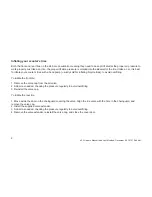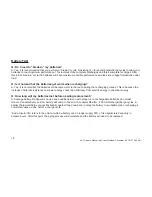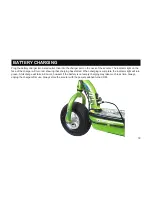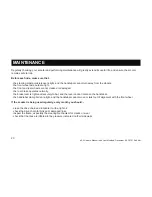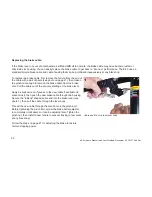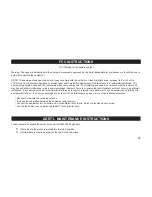
18
e4.5 Owner's Manual.indd, Last Modified: December 28, 2012 10:49 AM
Battery fAQ
Q: Do I need to “break-in” my batteries?
A: Yes, it is recommended that you perform a “break-in” cycle consisting of ~ three discharge/charge cycles to allow your
batteries to reach optimum performance. This involves three complete discharges and three complete recharges. After
this initial “break-in” cycle the batteries will have maximum possible performance and less line voltage fluctuations under
load.
Q: Is it normal that the batteries get warm when recharging?
A: Yes, it is normal that the batteries will become warm to the touch during the recharging process. This is because the
increase of internal resistance and lower energy conversion efficiency from electric energy to chemical energy.
Q: How long will my batteries last before needing replacement?
A: Average battery life depends on use and conditions. Even with proper care, rechargeable batteries do not last
forever. Conservatively, an SLA battery will come to the end of its useful life after ~200 full discharge/charge cycles. A
partial charge/discharge counts fractionally against those numbers; running the battery down halfway then recharging it
completely uses up one half of a charge cycle.
“End of useful life” refers to the point at which a battery can no longer supply 80% of its original rated capacity in
ampere-hours. After this point, the aging process will accelerate and the battery will need to be replaced.
Summary of Contents for e4.5 eZip
Page 1: ......





